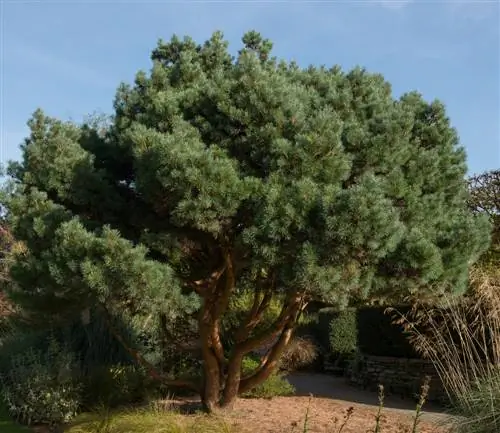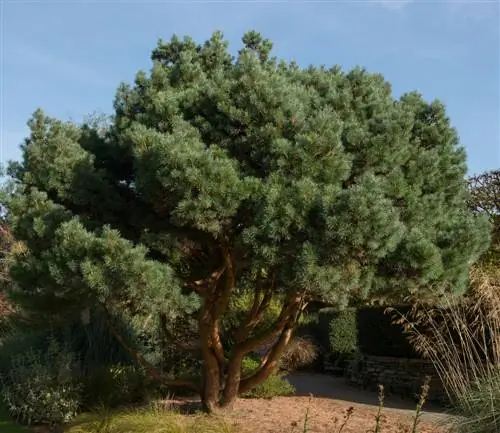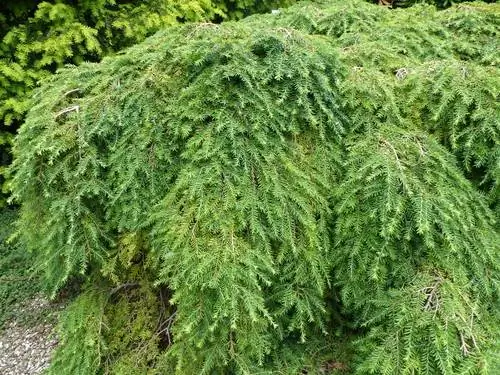- Author admin [email protected].
- Public 2024-01-05 20:48.
- Last modified 2025-01-23 11:21.
Bring a unique, undemanding tree into your garden with a Scots pine. With conscientious care, the conifer will delight you with beautiful growth and the incomparable scent of forest and wet wood. Pay attention to the following aspects and you will soon have a magnificent conifer growing in your garden.

What tips are there for a Scots pine in your own garden?
A Scots pine in the garden offers many advantages such as undemanding growth, a beautiful scent and shade. It needs a sufficiently large location to spread its roots and should be protected from strong winds. Consider the sulfur rain and root formation when choosing a location.
This is what makes a Scots pine desirable
- undemanding conifer
- beautiful reddish bark
- Smell of pine needles
- optimal shade provider
- Seeds can be boiled to make a tea
- cut back branches serve as firewood
- Habitat of many insects and birds (especially the great spotted woodpecker)
Demands on the location
The name of the Scots pine is quite misleading. Although it covers most of Germany's forest areas with the largest proportion of all conifers, the pine tree spreads best when it stands alone. Under these conditions, your crown will be more lush and the growth will be straighter. When choosing a location, keep in mind that strong winds will cause the trunk to bend. Your jaw is in danger of growing into a wind escapee. Otherwise, the Scots pine is very undemanding. A true survivor who can cope with long periods of drought.
Tip
Under good conditions, the Scots pine forms a wide, pronounced crown. It serves as a wonderful source of shade for small plants.
Note root formation
Scots pines are extremely stable. They form a root system that reaches up to 8 meters deep into the earth and can reach lengths of 16 meters. Consider this when choosing a location. Keep enough distance from paved garden corners and neighboring properties.
The Sulfur Rain
Scots pines produce large amounts of pollen. After flowering in May, the so-called sulfur rain occurs. You are certainly familiar with the phenomenon that yellowish mud forms, especially in puddles under the conifers. You have to expect this phenomenon if you keep a Scots pine in the garden.






